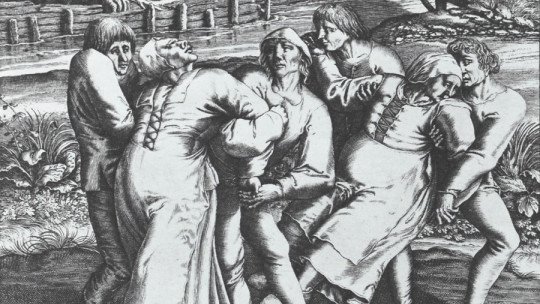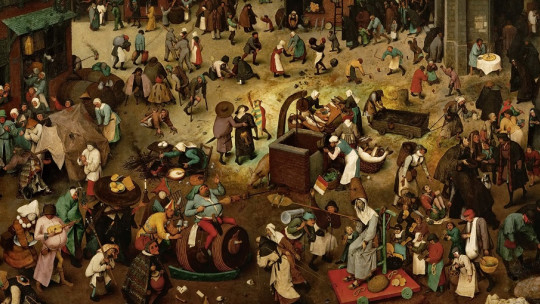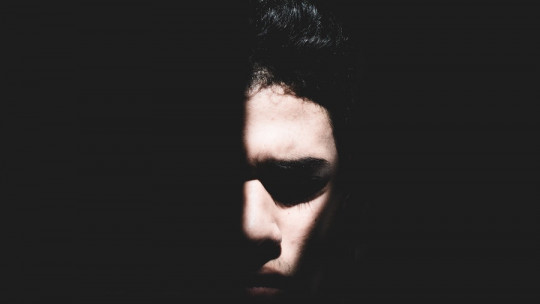
Throughout the human experience, we often encounter extraordinary scenarios or situations that challenge our understanding of what is real and what is not. From paranormal events to situations incomprehensible to us, it is common to face different contexts that we do not fully understand and that make us doubt our approach and way of understanding reality.
Mass psychogenic illness, or MPI (Mass Psychogenic Illness), is one of these intriguing phenomena that has baffled scientists, psychologists, and sociologists throughout history. Imagine a group of people who, seemingly out of nowhere or without a concrete explanation, begin to experience a series of medical symptoms without an obvious physical cause, or who become trapped in collective behaviors that are inexplicable and often strange to society at large.
In this article, we will explore what is mass psychogenic illness knowing its origins and different episodes associated with it, to increase our understanding and knowledge about this very intriguing phenomenon.
What is mass psychogenic illness?
Mass psychogenic illness, often called mass hysteria or mass sociogenic illness, refers to the appearance of physical or psychological symptoms in a group of people that have no apparent medical cause. These symptoms are real and often very distressing to those who experience them, but they cannot be explained by an underlying physical illness. Instead, these symptoms are believed to be the result of psychological and social factors, such as suggestion, stress, and group dynamics.
The term “mass hysteria” originated in the 19th century and is derived from the Greek word hystera, meaning uterus, due to the erroneous historical belief that this type of behavior was related to women’s uteruses. Fortunately, we have come a long way in our understanding since then and recognize that mass psychogenic illness is not linked to gender or any particular organ, but rather to psychology and social interaction.
Historical origins of this social phenomenon
Although the term is relatively modern, cases of mass psychogenic illness have a long history in humanity. One of the most notorious episodes took place in Salem, Massachusetts, in 1692. During that year, uA group of girls began displaying strange symptoms, such as seizures and hallucinations, which sparked an infamous witchcraft trial which resulted in the execution of several people.
These historical events show us that Mass Psychogenic Illness is not a new phenomenon, but has existed in various forms throughout history. In the next section, we will explore additional historical cases that illustrate the elusive and often disturbing nature of this phenomenon.
Importantly, the definition of mass psychogenic illness has evolved over time. Today, it encompasses a wide range of symptoms and behaviors that have no medical explanation, from paralysis and blindness to uncontrollable laughter and mass fainting. This breadth of definition reflects the diversity of ways in which this phenomenon can manifest itself in different cultural and social contexts.
Examples of MPI
Mass psychogenic illness has manifested itself in a series of notable historical cases that allow us to better understand the nature and underlying mechanisms of this intriguing phenomenon.
1. Hysteria in Salem (1692)
One of the most iconic cases of mass hysteria took place in Salem, Massachusetts, in 1692. During that year, a group of teenage girls began exhibiting unusual behavior, such as convulsions, screaming, and accusations of witchcraft against others in the community. These symptoms triggered a witch hunt that resulted in trials and executions.
The hysteria in Salem is a clear example of how mass psychogenic illness can spread through suggestion and group dynamics. The girls, watched and encouraged by others, developed symptoms that spread like wildfire. While these symptoms were real to those experiencing them, they had no underlying medical cause.
2. Dance of Saint Vitus (15th – 18th century)
The St. Vitus Ball is another historical case of mass hysteria that manifested itself in Europe for several centuries. People affected by this inexplicable dancing epidemic danced frantically and compulsively in the streets, often for days at a time. Although the St. Vitus dance was believed to be related to demonic possession at the time, today we know that it was an episode of mass psychogenic illness.
Group dynamics, suggestion and stress contributed to the spread of this seemingly irrational behavior. The mass hysteria surrounding the St. Vitus dance illustrates how a phenomenon can take different forms in different times and cultures.
3. The War of the Worlds (1938)
A more modern and high-profile case of mass hysteria occurred in 1938 when Orson Welles broadcast his radio adaptation of HG Wells’ “The War of the Worlds.” The realistic dramatization of an alien invasion led many listeners to believe that Earth was being invaded. Hysteria spread quickly, with reported cases of people fleeing their homes and calling authorities. This case highlights how mass psychogenic illness can be triggered by the combination of suggestion and fear, even in the age of modern media.
Causes of Mass Sociogenic Disease
To understand mass psychogenic illness in depth, it is essential to explore the mechanisms and causes underlying the manifestation of this peculiar form of mass hysteria.
1. Suggestion
Suggestion is a central factor in mass psychogenic illness. People are suggestible and may develop symptoms when presented with the idea that they are sick or experiencing something out of the ordinary. In historical cases, such as the Salem hysteria or the St. Vitus dance, suggestion played a fundamental role. Observing the symptoms of others or believing in witchcraft and demonic possession suggested to people that they might also be affected.
2. Group dynamics
Group dynamics is another determining factor. When people gather in groups, the influence of their peers can be powerful. The need to belong and conform to the group often leads to the adoption of shared symptoms and behaviors. In cases of mass hysteria, group dynamics can fuel the spread of unexplained symptoms and behaviors. The social pressure to fit in and participate can be overwhelming.
3. Stress
Stress is a common trigger of mass psychogenic illness. In high-stress situations, people are more susceptible to developing unexplained symptoms as a way to release accumulated stress. Sometimes traumatic events or fear can trigger episodes of mass hysteria.
4. Imitation and reinforcement
Imitation and mutual reinforcement also play a role in mass psychogenic illness. When people begin to show symptoms, others may imitate them, creating a cycle of reinforcement. This imitation behavior can intensify symptoms and lead to an increase in the spread of hysteria. Furthermore, the care and support that affected people receive can reinforce the continuation of symptoms.
Social and psychological impact
Mass psychogenic illness goes beyond the mere manifestation of physical or psychological symptoms in a group of people. It has a significant impact on society and the mental health of those involved.
1. Social impact
2. Impact on Mental Health
Conclusions
In conclusion, mass psychogenic illness remains a psychological and social mystery that endures throughout history. Its causes, mechanisms and effects are complex and multifaceted, impacting both the individual level and society as a whole. Understanding this phenomenon is essential to minimize its negative impact and promote mental health and well-being in communities. Education, effective communication and support are essential tools in the prevention and management of mass hysteria.








